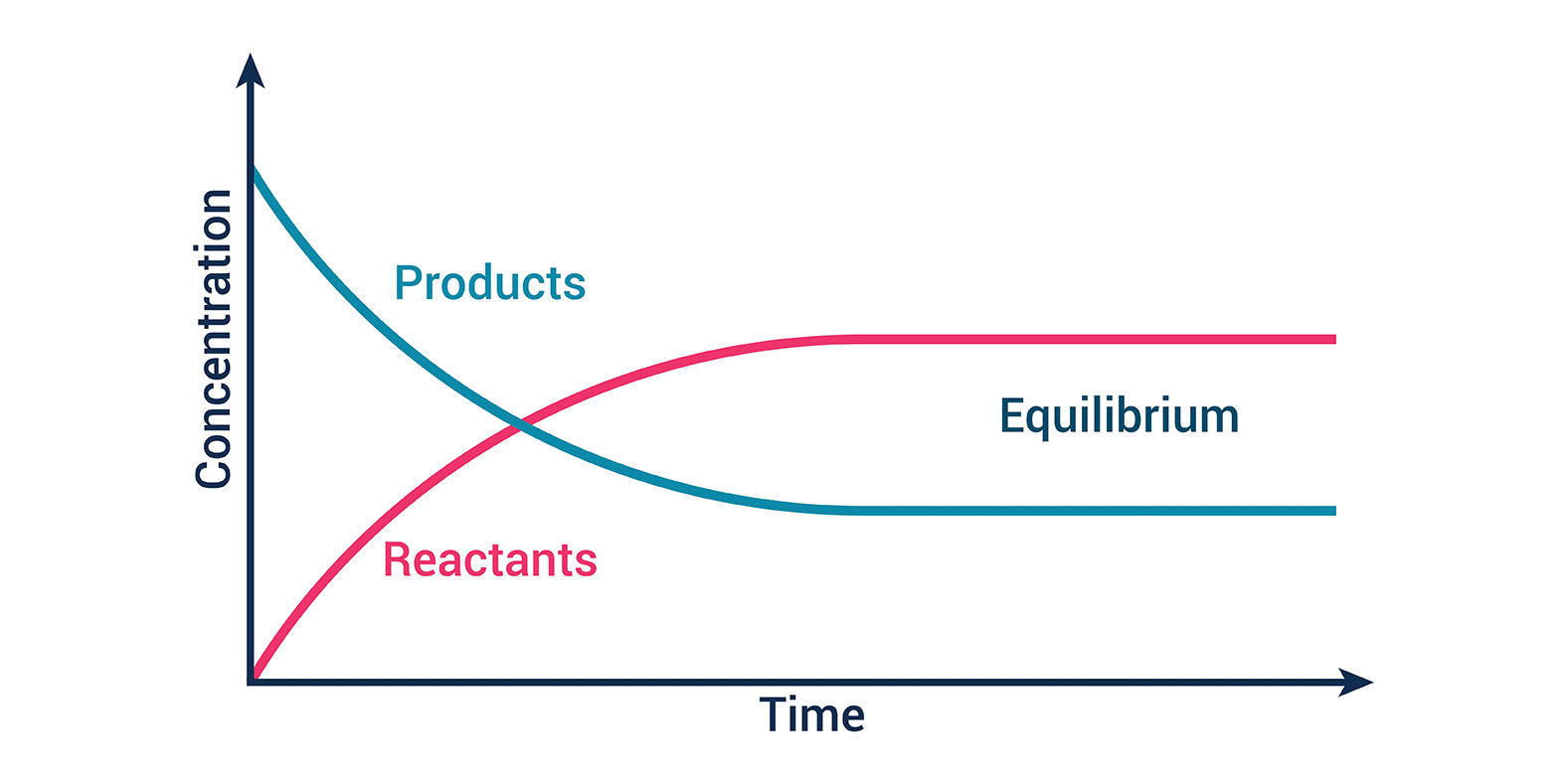
< Back
equilibrium
Definition
Equilibrium is a state in which opposing forces are balanced. This means that there is no net change in the system.
There are two types of equilibrium: static equilibrium and dynamic equilibrium. Static equilibrium is when a system is not moving. Dynamic equilibrium is when a system is moving, but the overall motion is balanced.
Static equilibrium can be seen in many everyday objects, such as a ball sitting on a table or a book sitting on a shelf. In these cases, the forces acting on the object (gravity and the surface pushing up on the object) are balanced, so the object does not move.
Dynamic equilibrium can be seen in many natural systems, such as a river flowing or a pendulum swinging. In these cases, the forces acting on the system (gravity, friction, and the force of the water or the pendulum's string) are balanced, so the system continues to move in a steady state.
Equilibrium is an important concept in many areas of science, including physics, chemistry, and biology. It is used to describe the behaviour of systems ranging from atoms to galaxies.
How can the word be used?
The equilibrium of the system was disturbed by the introduction of a new variable.

Different forms of the word
Noun: equilibrium, balance, homeostasis.
Adjective: equilibrium, balanced, in equilibrium.
Verb: to equilibrate, to balance.
Synonyms: stability, poise, equipoise.
Antonyms: imbalance, disequilibrium, instability.
Etymology
The word "equilibrium" comes from the Latin word aequilibrium, which means "equal balance." It was first used in English in the 16th century, and it is still used today to refer to the state of being balanced or in balance.
Question
What is an equilibrium?
AQA Science Exam Question and Answer
Question:
Explain the concept of equilibrium in the context of physics and its significance in understanding balanced forces. Describe how equilibrium is achieved when an object is at rest or moving with constant velocity. Provide examples of real-life situations where equilibrium is demonstrated and how it is related to the net force acting on the object.
Answer:
Equilibrium in physics refers to a state where an object is either at rest or moving with constant velocity, experiencing balanced forces. When an object is at rest, it is in static equilibrium, and when it moves at a constant speed and direction, it is in dynamic equilibrium.
In static equilibrium, the net force acting on the object is zero. This means that the forces pushing or pulling the object are balanced, resulting in no acceleration. In dynamic equilibrium, the object's speed and direction are constant because the applied forces are equal in magnitude and opposite in direction, creating a balanced situation.
A common real-life example of equilibrium is a book sitting on a table. The gravitational force pulling the book downward is balanced by the normal force exerted by the table upward, resulting in a net force of zero, and the book remains at rest. Understanding equilibrium helps us analyse and predict the behaviour of objects under different forces, contributing to our comprehension of the fundamental principles of physics.